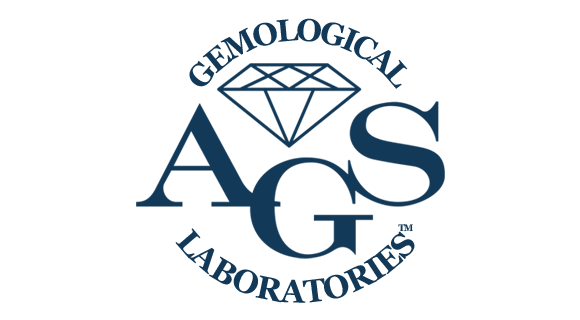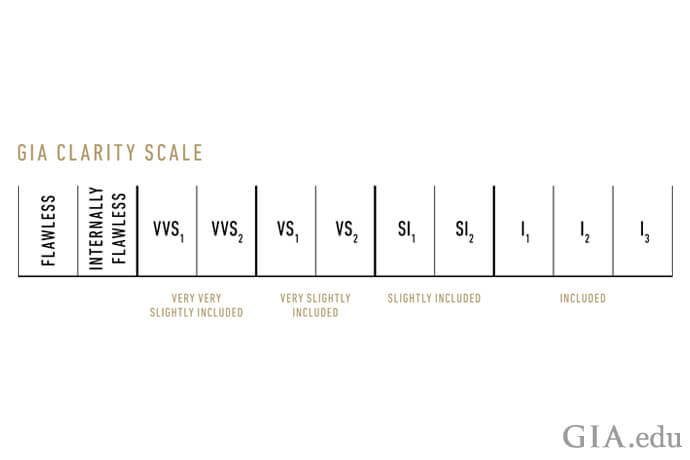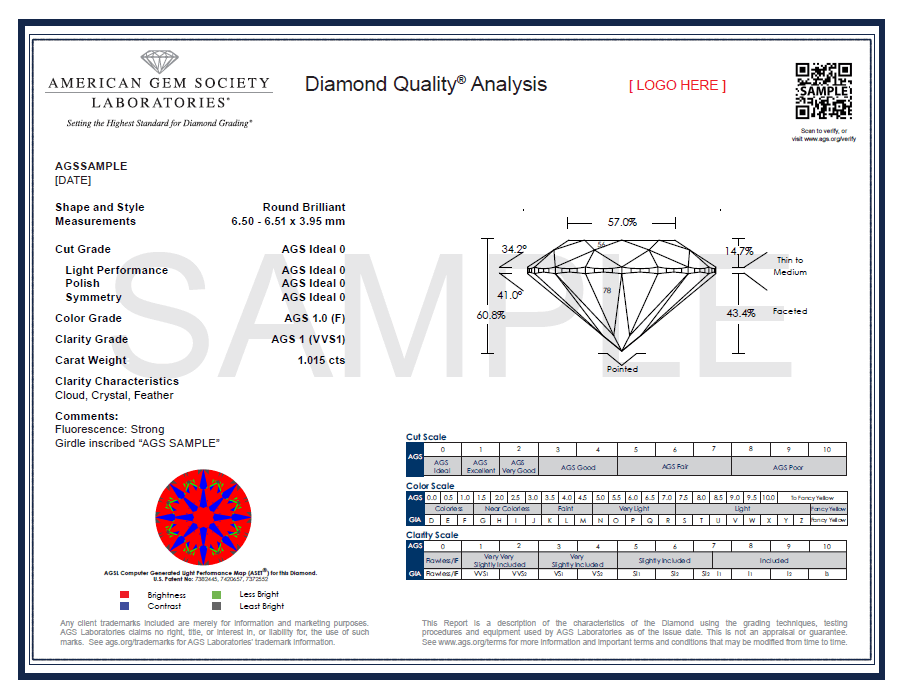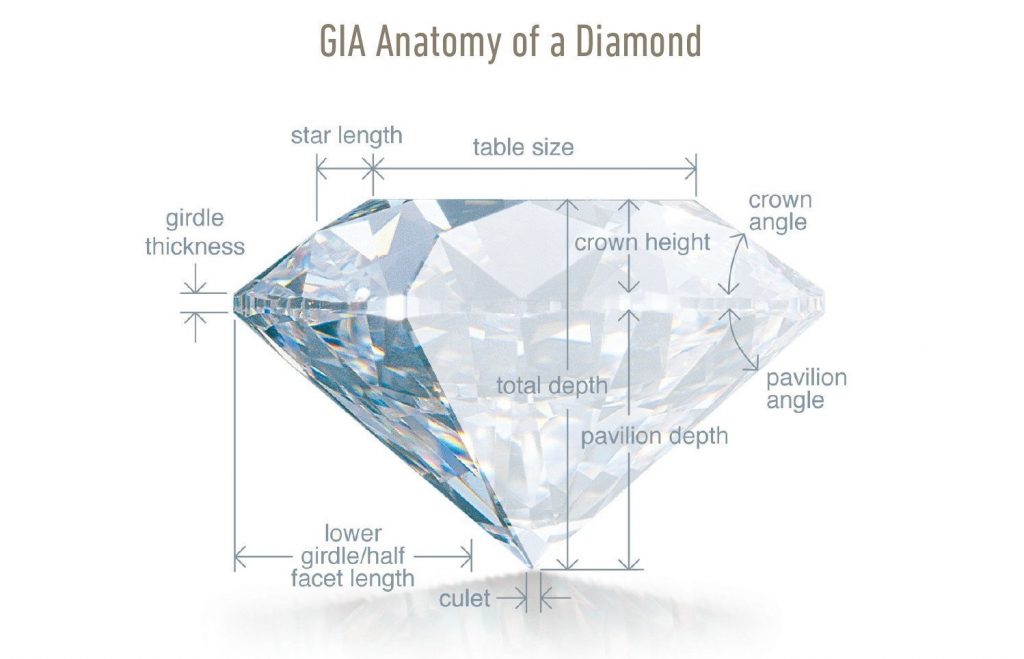AGS Diamond Certification: Is your Diamond Really What it Claims to Be?
Key Takeaways
- ***Update*** AGS Laboratories will be integrated into GIA from 2023 and won’t produce new certificates.
- While we recommend the GIA to our readers as the most reliable and consistent diamond lab out there, the American Gem Society is a strong second. In fact, we only advise our readers to buy diamonds graded by either of these labs.
- The AGS grades their diamonds using a similar system to the GIA, and remains pretty easy for first-time shoppers to get their heads around when they start looking for a diamond for their ring.
- Nevertheless, the GIA is still the strongest of the two, and the one we would consider to be preferable for any of our readers.

The differences that exist between every diamond in the world today are so profound that creating a reliable and trustworthy system for grading them – and, by extension, assigning value to them – is incredibly difficult. While certain bodies like HDL, EGL and IGI have formulated their own approaches, only one or two have managed to earn the near-unanimous recognition and trust of the global diamond community.
The GIA is, of course, one of them – and we talk at length about their value for shoppers in this article – but the AGS is widely considered to be a close second.
The AGS (American Gem Society) is one of the pioneers in the diamond industry and known for creating the gemstone grading system, using a scale of 0-10, for the classification of diamond characteristics. It is one of the world’s most respected gemstone laboratories, and gems with an AGS certification ensures the quality of the diamond.
What is AGS Certified?
An AGS certification means that a diamond has undergone some pretty rigorous checks to determine its quality – without which, we cannot accurately judge its value.
A non-profit body dedicated to ensuring a strong playing field for shoppers – many of whom are total newcomers to the process of picking out a strong diamond – it is recognized in many parts of the world as one of the most reliable, consistent and exacting organizations out there.
In other words, a diamond that is AGS certified is one that has been checked and graded independently, with a view to simplifying the diamond-buying process for newcomers and experts alike.
The History of AGS Certification
The American Gem Society was founded in 1943 by a small group of retail jewelers who had the interests of buyers in mind, and a keen interest in protecting them against fraud in the diamond industry. Even now, they are bound to uphold the highest standard of ethics and integrity to the diamond industry, where ensuring a high level of dependability for first-time shoppers is essential.
In 1966, AGS was the first organization to establish its own gemological laboratory to create a diamond cut grading system that consumers could read and understand. They accurately and consistently graded diamonds using their Four Cs grading system, providing consumers with a greater amount of education and clarity in choosing a diamond.
AGS Diamond Grading
AGS’s diamond grading is categorized by 4 Cs: carat, followed by color, clarity, and cut, all of which are graded on the 0-10 scale. Each diamond is analyzed and graded by at least two gemologists, based on these four qualities.
Carat
Grading a diamond’s carat is based on its weight, not its size. AGS measures the carat weight to the third decimal place using a digital carat scale, with the actual size of the diamond in millimeters (mm).
For example, a one-carat diamond is equal to 200 milligrams (0.2 grams). Two, 1-carat diamonds can be completely different sizes, since they are measured in weight, not in size. Even two diamonds of the same carat weight and shape can differ significantly in their size, as proportion is considered under the Cut grade, rather than Carat.
Color
Color grade is determined by how white or colorless a diamond is. AGS grades diamonds on a color scale from 0-10, with 0 being the most colorless and 10 containing a yellow or brown color tint. The scale moved in increments of 0.5, with the first three grades (0, 0.5 and 1) representing the Colorless grades, and the following four grades (1.5-3.0) representing the Near Colorless grades.

You can see from the scale below how AGS grades the color of diamonds on the 0-10 scale, compared to the GIA letter scale. The color grade given by AGS helps identify the quality of the diamond’s color.
The case is the same of AGS diamonds as it is for GIA diamonds: the color scale is only relevant for clear diamonds. Fancy color diamonds are graded differently.
Clarity
AGS grades clarity on how clean a diamond is from inclusions and blemishes and is determined by examining the diamond with a binocular microscope under specialized lighting.


Cut
A diamond’s cut grade given by AGS is a bit different than other grades, as it’s given both a number and a word grading. Using a computerized device with revolutionary hardware and software to create a three-dimensional model of the diamond, AGS rates values for light performance including brightness, dispersion (fire), leakage, and contrast.
The diamond is then analyzed for its proportions, such as girdle, culet, weight ratio, durability, and tilt. A diamond’s finish is determined based on polish and symmetry.
A grade of Ideal and Excellent grades, depending on Shape, demonstrates proportions and angles cut for maximum fire and brilliance.
Does AGS Certify Lab Grown Diamonds?
Yes, the AGS certifies lab grown diamonds as well as natural diamond. It utilizes the same grading system for both.
Like the GIA, the AGS also makes it possible for you to verify the authenticity of every one of their reports against their own database, offering shoppers a watertight level of reassurance that their diamond is the one mentioned within the report – and that the report is genuine – whether it is earth created, or lab grown.
Are AGS Diamonds Inscribed?
Yes, the AGS offers high quality laser inscription services for English text, which can be made along the widest part of the girdle.
These inscriptions are microscopic, and do not impact the clarity of the diamond. They represent irrefutable proof that the diamond in your hand matches the diamond described within the AGS report and, unless repolished by a professional jeweler, cannot be removed from the surface of the diamond.
GIA vs. GIA – Is AGS as Good as GIA?
While it depends on who you ask, we consider the AGS to be the next best thing to the GIA.
Investing in an AGS diamond is not accompanied by the same level of risk that we would attach to a diamond that has been graded by, say, the HRD or EGL. Why? Because, like the GIA, the AGS is committed to providing buyers with a dependable and impartial overview of the diamond that is as close to objective as possible – and therefore as consistent as possible.
Nevertheless, the GIA still remains the most accurate and reputable body for diamond grading – and, as a result, the most widely-used. The original mastermind behind the Four Cs, this gemological institution ensures an incredibly high standard is met for their diamonds around the world, without any bias towards the vendor.
The GIA’s standards tend to be slightly stricter, which is why some vendors will turn to the AGS for certification after already receiving certification from the GIA. In some non-Round shapes, the AGS may grade color slightly higher, meaning that shoppers will pay considerably more.
The difference in quality and dependability between the AGS and GIA, however, is pretty slim, and buyers aren’t putting their money on the line when they opt for an AGS diamond.
AGS Quality Report

Advantages & Disadvantages of an AGS Certification
Advantages
The AGS is a highly respected certification and having a diamond certified via its expert graders has many benefits. First, the certification offers a reliable grading for the diamond. It also ensures that your diamond has been analyzed by one of the best in the diamond business, and that you’re receiving the diamond quality that is stated on the certificate. It provides peace-of-mind about the authenticity of your diamond as well as the high security measures taken to grade the diamond.
Disadvantages
No grading body is considered to be as stringent as the GIA, and that high level of rigidity offers a pretty significant benefit to buyers: it means that diamonds that sit on the borderline between two colors or two clarity grades will generally be graded down, rather than up, meaning that you will never end up overpaying on lower quality.
While the AGS is regarded as the next best in terms of consistency and impartiality, the GIA remains unrivalled in its ability to ensure that buyers are never paying more for a diamond that sits on the cusp of two grades with totally different values.
You can click here to take a look at our wide range of diamonds, all of which are accompanied by a full GIA diamond report – and the high level of assurance their method offers buyers.

Jun 2, 2021 By Willyou.net
The Truth Behind IGI Diamond Certification: A Complete Guide

Oct 16, 2021 By Willyou.net
The Ultimate Guide to Understanding HRD Diamond Certification








